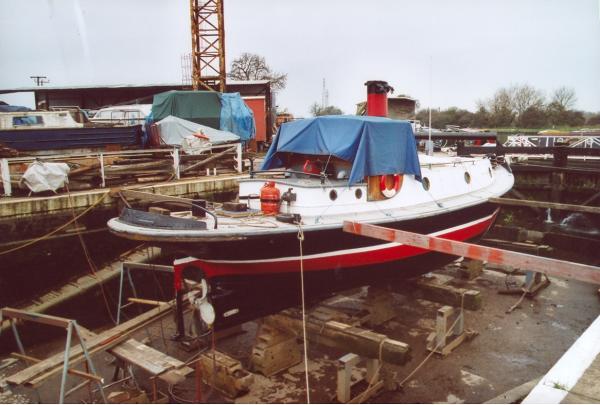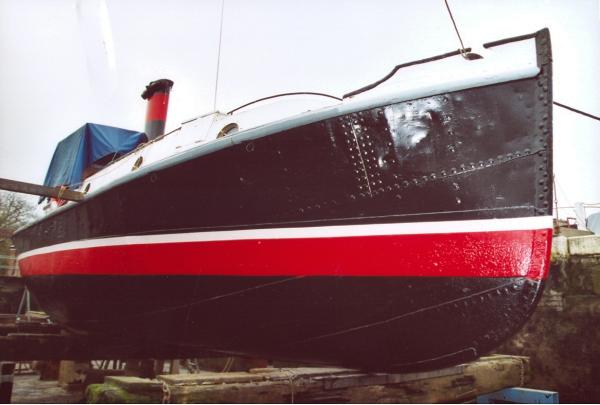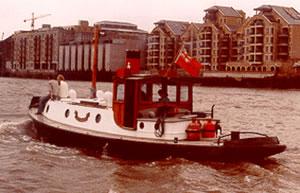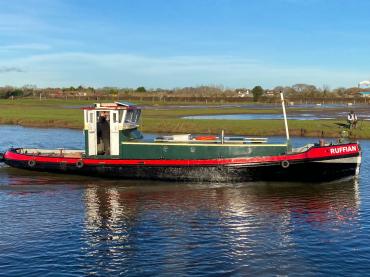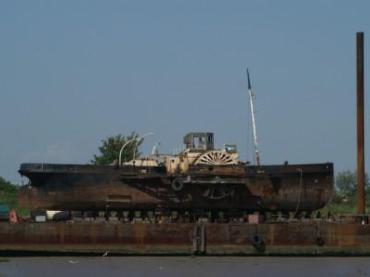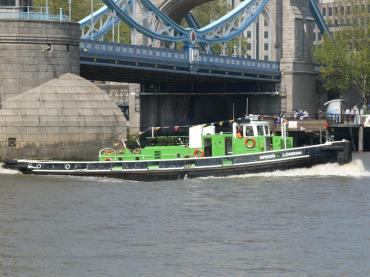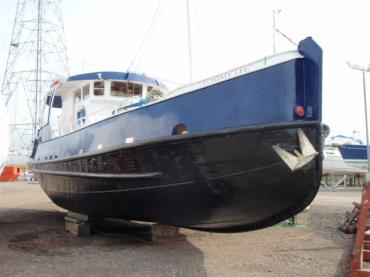

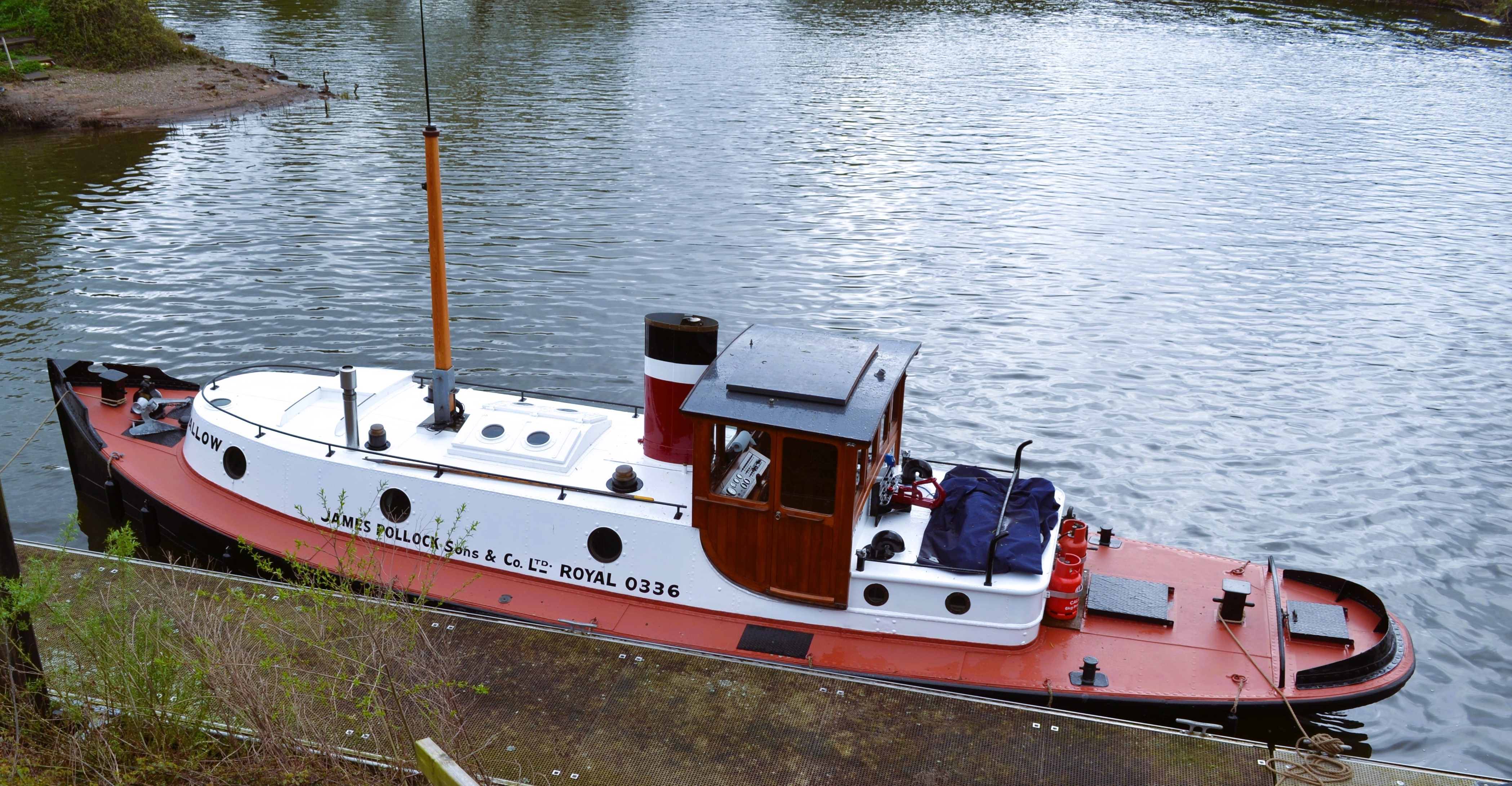
Details
Construction
Dimensions
History
SWALLOW is a launch tug, otherwise known as a river or dock tug and belongs to the first generation of diesel powered tugs after the period of steam engines had come to an end. She was built in 1937 by James Pollock and Sons & Co. Ltd, Shipbuilders and Engineers of London and Faversham, England. She is one of 12 Jubilee Class tugs built, on account of the first example being launched in the same year as King George V's Silver Jubilee in 1935. She was the fifth Jubilee Class tug to be built and is one of only three that still remain.
SWALLOW was originally fitted with a huge 2 cylinder 60hp Widdop diesel engine. She is riveted iron construction and her hull is round bilge, being unique in that her hull along the waterline was strengthened during construction to allow her to undertake ice breaking duties during the winter months on the frozen River Lea.
SWALLOW would usually tow four heavily laden 100 ton barges known as Lighters carrying goods that had been unloaded from cargo ships in the River Thames. There were usually five lightermen, one on each of the 4 barges (lighter) and one on the tug to assist the tug skipper carrying goods or wares up and down the river and from cargo ships to shore. A lighter is a large unpowered flat-bottomed barge with an open hold used especially in unloading or loading cargo ships. Swallow usually towed lighters laden with copper from Canada for the manufacture of cables at Enfield Rolling Mills in North London and huge tree trunks from Africa for the many timber wharfs and furniture manufacturing companies located along the Regents Canal and the River Lea as far as Hackney, Tottenham, Edmonton and Enfield up until the late 1960s. She also worked on dredging and engineering works along the River Lea for British Waterways.
As ships grew ever larger so the London docks became ever less suited to their needs. The River Thames itself could no longer support the increasing size of ships and the advent of shipping containers and the lorries to carry them rendered the Port of London obsolete. By the late 1960s the introduction of a new deep water container port downriver at Tilbury took some of the work, but the ports of Felixstowe and Harwich had captured most. This eventually led to the closure of most of London's upriver docks in the Port of London. These turn of events led to SWALLOW being abandoned in the 1970s in a creek at Sunbury off the River Thames.
SWALLOW is still a very powerful tug, but thankfully she was thrown a lifeline in 1979 when her then owner Anthony Matthews restored her and converted her into a very capable and cosy two-berth cruiser. She has been under current, private ownership since 2012.
Key dates
-
1937
Built by James Pollock, Sons & Co Ltd, ship number 1648, launched November, delivered December
-
1978
Found derelict in a creek at Sunbury and purchased from British Waterways for restoration
Sources
Salmon, Anne, A sideways Launch, 1937
Own this vessel?
If you are the owner of this vessel and would like to provide more details or updated information, please contact info@nationalhistoricships.org.uk

